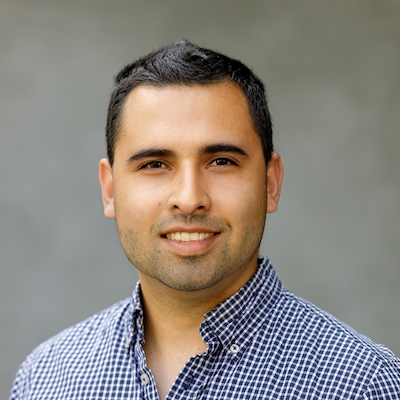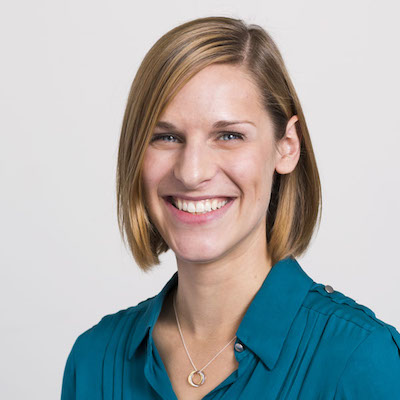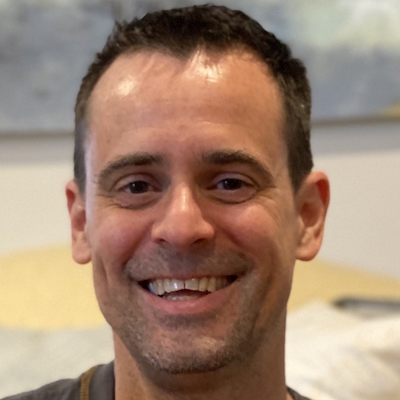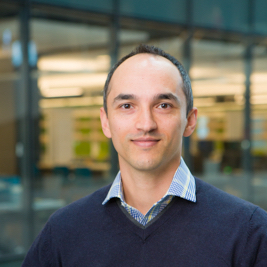Small humans, big dreams: How Align’s parents juggle kids and computer science
Author: Milton Posner
Date: 09.08.21
Want a diverse collection of interesting people? The recipe’s easy.
First, create a computer science master’s degree program, one that’ll attract educated people interested in equipping themselves for the future.
Then, tear out the computer science prerequisites. Welcome applicants from any academic background. Make your program a launching pad for everyone’s academic and professional redirect.
And prepare for the parents to show up.
At the Khoury College of Computer Sciences’ Align graduate program, there are some students balancing children and their master’s journey, with some working on top of that. Meet five Align parents with remarkably different journeys.
Bo Mendez
Everyone else in this piece found their way to computer science, roughly speaking, on their own. For Seattle-area high school math teacher Bo Mendez, who trained in math and music education as an undergrad, computer science came knocking when his school looked to add electives.
After familiarizing himself at a series of summer teaching conferences, his eyes were opened to another means of expression.
 Bo Mendez
Bo Mendez
“I went into music and math because they express the human experience in a way that’s not just saying it out loud in English,” he explained. “Computer science is the same way.”
Soon Mendez realized he wanted a more substantial computer science career with a mix of software engineering and teaching. Recognizing his knowledge limits, he vowed to get his master’s degree.
“A lot of people were like, ‘You want to do the short route or the long route?’” says Mendez, who also considered local and online boot camps. “And I said, ‘I want to do the right route. I want it to be comprehensive, I want to ensure I’ll get a job, I want to learn about this field.’” Align’s no-prerequisite approach, combined with the staff and family fit of the Seattle campus, made it exactly what Mendez was seeking in 2020.
With a five-year-old in the house, there were hard decisions to make. Mendez and his wife landed on three criteria; he’d need to work full-time, she’d need to be okay with his time commitment, and there needed to be a clear return on investment.
“We weighed those three things and decided that this was the right move,” Mendez says. “There’s going to be a big shift in income and also extra time outside of work because I won’t be [a student] anymore.”
But for now, it’s a daily challenge. Mendez’s remote math tutoring and support job with Outlier.org, a for-credit online university, lets him log 40 hours per week at convenient times. His Align classes have been remote too, a necessity during an “extraordinarily challenging” summer that included the arrival of their second child.
Mendez expects to graduate with his master’s degree next summer, making his schedule more manageable. Apart from full-time work and family time, he’ll also have more flexibility for the church music directing he does on the side.
“A huge goal of mine,” he says, is “a healthy balance between work and everything else people want out of this life.”
Maria Piper
Even among Align students seeking a master’s degree, Maria Piper stands out. That’s because she’s already got one.
After parlaying a childhood love of Japanese language and history into an East Asian studies bachelor’s and a year teaching in Japan, Piper returned to school amid the post-2008 recession. A couple of years later, history master’s in hand, she followed her mother and grandfather into teaching.
 Maria Piper
Maria Piper
“I taught in a very different environment than they did,” Piper said, noting that many of her ninth graders entered reading well below grade level. She also was intrigued by the potential of technology to do even more to engage and teach students. In particular, she wanted to explore the educational potential of games. That’s when a friend, after hearing one of her game ideas, said something that changed her career path.
“He said, ‘No developer is ever going to work with somebody who says they have a great idea but doesn’t know how to code, because you have no idea what goes into it,’” Piper recalled. “That’s when I started transitioning; I went to a web development boot camp and moved to the Bay Area.”
Over the next seven years, two things changed. First, Piper had three children, with the youngest arriving in 2019. Second, she worked a smorgasbord of Bay Area tech jobs, from curriculum-based roles to business and human resource positions. She kept running into the same issue.
“There really aren’t that many jobs in this niche area of building programs,” she explained. “I applied for other jobs that had technical education components, but the lack of fundamentals was holding me back.”
After six years combined at Oberlin and NC State, Piper couldn’t imagine trudging through years of prerequisites just to draw even. Then she found information about Align, applying and enrolling in 2020.
While the program is designed so students can work during the day and take classes during the evening, Piper found that combining work, classes, and kids proved infeasible. Things have improved since she stopped working, and online classes have enabled a life balance that likely couldn’t exist if she had to commute into San Francisco. But even with that, and even with her mom around for help with child care, it’s been difficult.
“The Align program had four-night classes during the week. That’s four bedtimes I’m missing, and bedtimes are the worst times for a parent because they’re trying to get a lot of things done,” Piper says. “So my poor husband is sitting there doing it all himself. But at least I could get out and say goodnight and give them a hug during breaks.”
With an internship planned into her coursework, Piper expects to graduate sometime in the back half of 2022, finally armed with the foundation she has sought for years.
“Being a software engineer will be important,” she says, “but in five years or so I would want to start transitioning to the engineering manager side or the training of software engineers.”
Henry Kinard
The student-to-teacher transition happens all the time. Student to teacher to student—not as much.
After securing a bachelor’s and master’s degree in French, Henry Kinard landed a French (and sometimes journalism) teaching job at Noble and Greenough School, a private boarding school in Dedham, Massachusetts. While there, he led international, community-service-focused trips within the school’s extensive global education program.
 Henry Kinard
Henry Kinard
“It’s funny,” Kinard remembers. “As a teacher who preached for a decade and a half, ‘The only way you’ll learn is by getting out there and trying new things,’ it was natural that I myself one day said, ‘I had a wonderful career as a teacher; I’ve got to try something.’ It’s never too late.”
He transitioned into computer science in 2019 and relished its connections with his teaching, namely project-based work and real-world experience. He also saw tinkering- and language-based connections with his hobby of composing and producing music, which he calls his “proverbial happy place.” Enticed by the diversity of the Align community, he jumped eight miles northeast to Northeastern’s Boston campus.
“I’ve met so many people like myself who had no STEM coming into it, [plus] people at different stages of life,” he said. “When people are trying to balance different things, there’s a community that’s created, and an understanding that a lot of us are trying to juggle different things. Align is a great community in that way.”
His personal juggling act—a team project with a wife who works full-time—involves a five-year-old and a three-year-old whom Kinard jokingly calls “needy little people.”
“I will be a good father. I won’t compromise that at all,” he insisted. “But to make it through this program I have to be really tight with time management.”
To that end, Kinard triages his work based on the amount of focus required. Lower-tier work can be completed with noisy kids in the house; upper-tier work is best saved for hours covered by school or daycare. At least it was until COVID-19 shut down the schools and daycares.
“My teachers and Align advisors were so helpful,” Kinard said. “The hardest point of the bridge year is the exact time I had to take care of my kids. I finished one of the classes and then they let me delay the end of the other class I was in. I finished it in the summertime … I don’t think I would have made it through otherwise.”
Kinard believes that the time management lessons he has learned will serve him well in industry, and that the co-op he expects to begin in January will help him define what that role might be. He loves the more traditional learning, he said, “but nothing happens until you get out there, get dirty with it, and do the work yourself.”
With an expected graduation date of December 2022 and a plethora of interests that he’s explored within Align, Kinard’s career is wide open. He may even teach again at some point.
Ganga Hosmani
As if juggling kids and grad school wasn’t tricky enough on its own, let’s throw culture shock into the mix.
Before 2017, Ganga Hosmani lived in India. She grew up in a small town, and until she started university in 2001, she had barely used computers.
“We were just getting to know the internet,” she recalled. “We didn’t understand what operating system it was or what was actually happening. It was all new. That’s what drives you—the curiosity, what exactly happens behind that small screen.”
 Ganga Hosmani
Ganga Hosmani
In her university studies, Hosmani dove deep into the hardware. After graduating with a bachelor’s in telecommunications, she spent the next dozen years working in chip verification for Texas Instruments and Microchip Technology. Toward the tail end of that time, she gave birth to her son.
By this point, Hosmani’s husband was in Boston working on his master’s in engineering and management. Numerous family members at home supported her, but after two years apart—and with her husband and son having barely spent time together—the pair moved to Seattle, where her husband had netted a job with Amazon.
“We were totally new here, new culture, everything was new,” she explained. “So I took a year off from career and everything, just spent some time with my kid. When he turned two, two and a half, that was when I decided to … get back to work.”
She hadn’t planned on doing a master’s, but her husband, enamored with the cultural understanding he’d gained from his fellow master’s students, encouraged it. Hosmani, realizing she might never have the opportunity again, resolved to append her hardware experience with software knowledge.
“Computer science made sense,” she said. “I already knew the hardware part, so let me explore the software.”
Because Northeastern’s Seattle campus sits across the street from Hosmani’s husband’s office, the university and its Align program were a natural choice, if not an easy path.
“It was hard, a lot of prioritizing and planning,” Hosmani admits. “We couldn’t change our schedule for any reason … Looking back now, I don’t know how we did it.”
That schedule typically involved Hosmani knocking out as much classwork as possible during the mornings while her son was at school, then attending classes in the evening while her husband looked after their son. When she had to, she’d cart him to class, study groups, or TA hours in a stroller. On weekends, her husband watched their son while she went to the university to study.
After withstanding the stresses of pandemic school closures, Hosmani graduated Align in May with an MSCS degree and landed a computer-aided engineering position at Intel, a “perfect role” chock full of verification, machine learning, and data science.
“Balancing the role of mom and student is quite a challenge,” she admitted. “You need a lot of support—husband, extended family, friends. But if you’re really interested, if you want to do it, you can do it.”
Rajen Aldis
Rajen Aldis’s last name carried some professional weight, if you knew where to look. His father, uncle, grandfather, and great-uncles had all practiced medicine, and by 2018, Rajen had a resumé overflowing with prestigious positions and institutions.
Doctor of medicine from Dartmouth Medical School. Clinical and research fellowships at Harvard Medical School. House officer at Cambridge Health Alliance. Associate psychiatrist at Brigham and Women’s Faulkner Hospital.
But Aldis had something up his sleeve—not a career redirect, but a merging of an old passion with his medical journey.
 Rajen Aldis
Rajen Aldis
“My father got me a computer way back in the 80s when they were very new and it was rare for people to have them in their homes. And it was even more rare for kids to have one,” he recalled. “That sparked my interest.”
In his training and work, Aldis did projects that melded technology and computer science with medicine, and wanted to understand how technology—including AI—worked behind the scenes within medicine. So he opted for a computer science master’s.
“I enjoyed bringing my code skills up to speed, and then I enjoyed transitioning to the mainstream master’s part of the program and choosing the courses I wanted to take and specialize in,” Aldis says. “I did a data science concentration, so I did the AI course and data mining courses.”
By the time he started at Northeastern, Aldis and his wife had two young daughters in tow. While he had balanced kids and work for a few years, grad school was different.
“Parenting is a 24/7 from when you wake up to when you go to bed … and work hopefully has some boundaries,” he explained. “But school doesn’t have any boundaries because there’s always something that has to be done … Every moment I wasn’t parenting, I was studying.”
And it has paid off big time. In December 2020, about half a year before he graduated from the Align program with his MSCS, Aldis assumed a new role at the Cambridge Health Alliance. As associate director of informatics research—a relatively new role for a physician with tech experience—he assists researchers with the data science components of their work. Added bonus: his father, a longtime doctor himself, thinks it’s fantastic.
“The friends that I had and the other people in Align, they were doing a lot of cool stuff,” he said. “I found it admirable to see the resiliency of people. Folks had so much going on, but still found a way to devote themselves.”